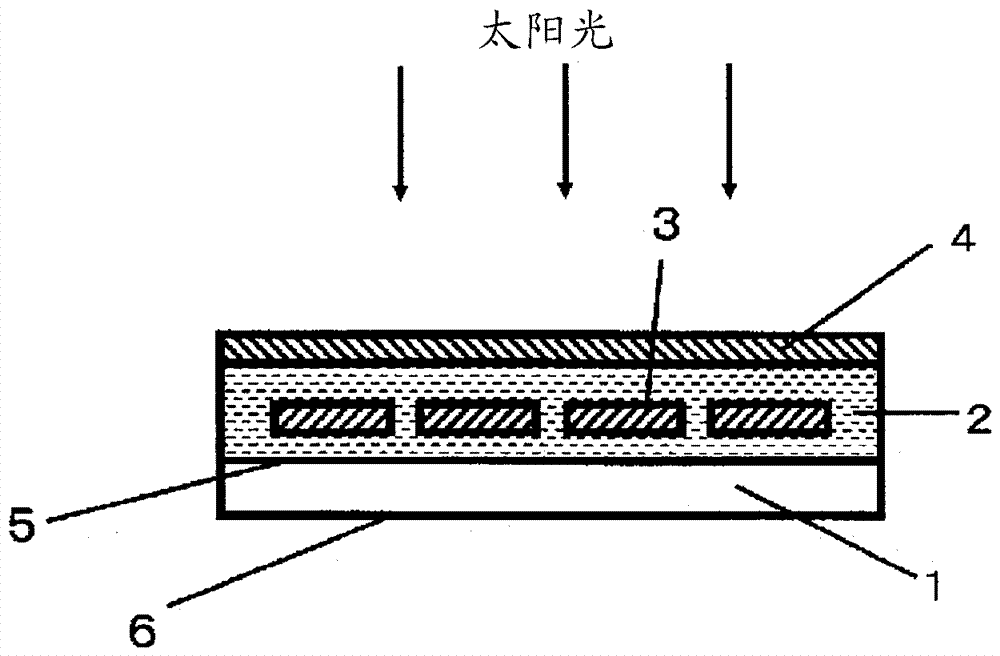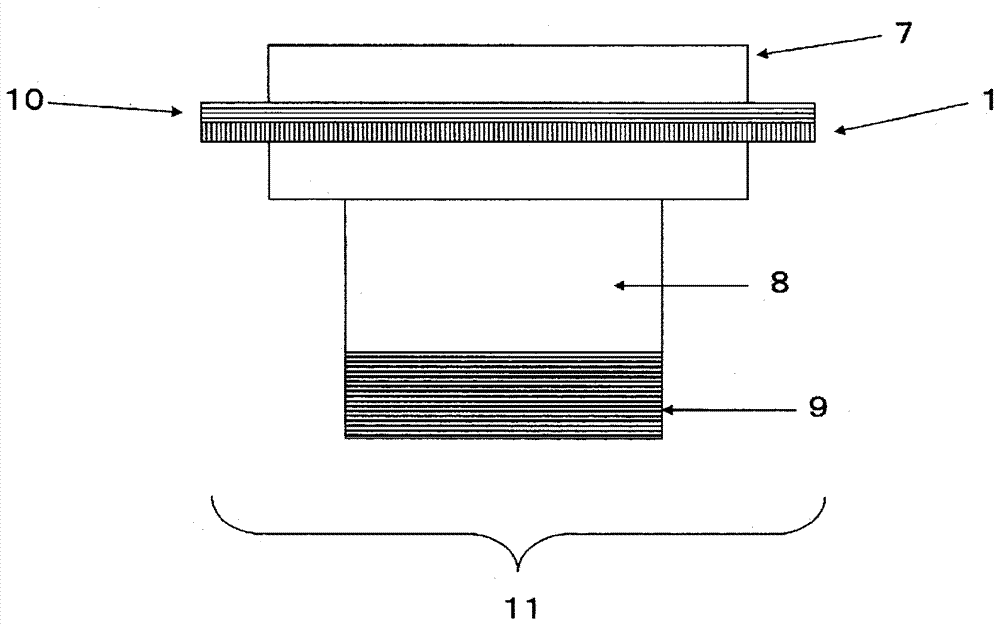Laminated sheet, method for producing same, back sheet for solar cell, solar cell module, and method for manufacturing back sheet for solar cell
A technology of solar cells and laminated sheets, applied in electrical components, other household appliances, chemical instruments and methods, etc., can solve the problems of acetic acid generation and easy deterioration of solar cell components, and achieve excellent adhesion and interlayer adhesion. excellent effect
- Summary
- Abstract
- Description
- Claims
- Application Information
AI Technical Summary
Problems solved by technology
Method used
Image
Examples
Embodiment
[0160] Hereinafter, although an Example is given and demonstrated about this invention, this invention is not necessarily limited to these Examples. In addition, various characteristic evaluations described in this specification were performed as follows.
[0161] [Evaluation method of characteristics]
[0162] (1) Layer thickness T1, T2, T3, T4, T5, T6, Ta, stacking ratio T4 / Ta
[0163] Follow the steps (A1) to (A4) below to obtain it. It should be noted that, regarding the measurement, 10 positions were changed and the average values were recorded as the thickness T1 (μm) of the P1 layer, the thickness T2 (μm) of the P2 layer, the thickness T3 (μm) of the P3 layer, and the thickness of the P4 layer. The thickness T4 (μm) of the P5 layer, the thickness T5 (μm) of the P5 layer, the thickness T6 (μm) of the P6 layer, and the thickness Ta (μm) of the entire sheet. Furthermore, the lamination ratio T4 / T6 was calculated|required using T4 and T6 obtained here.
[0164] (A1) U...
Embodiment 25
[0343] For Example 25, "Norburen" (registered trademark) FLX80E4 manufactured by Sumitomo Chemical Co., Ltd. was used as PP1.
[0344] ・Acid-modified polyolefin
[0345] As the resin constituting the P2 layer in Examples 1 to 26 and 57 to 72, “Modick” (registered trademark) P553A manufactured by Mitsubishi Chemical Corporation was used as resin 1 .
[0346] ・Polyolefin-based elastomer
Embodiment 24
[0347] In Example 24, as the elastomer 1, "Notio" (registered trademark) PN2060 manufactured by Mitsui Chemicals was used as the polyolefin-based elastomer.
[0348] ・Inorganic particles
[0349] Titanium dioxide was used as the inorganic particles of the P1 layer of Examples 1 to 5, 7 to 26, 57 to 72, and Comparative Example 1, and the P3 layer of Examples 1 to 9, 11 to 26, and Comparative Example 2. In addition, regarding the titanium dioxide of the P1 layer, for each of the examples and comparative examples, a masterbatch prepared in a ratio of 50% by mass / 50% by mass of the resin used as the main constituents of the P1 layer and titanium dioxide was carried out so that the desired concentration was obtained. Add to. Titanium dioxide in the P3 layer was added in such a manner that the desired concentration was achieved in a masterbatch made of the resin used as the main constituents of the P3 layer and titanium dioxide at a ratio of 30% by mass / 70% by mass for each of the ...
PUM
| Property | Measurement | Unit |
|---|---|---|
| thickness | aaaaa | aaaaa |
| particle diameter | aaaaa | aaaaa |
| melting point | aaaaa | aaaaa |
Abstract
Description
Claims
Application Information
 Login to View More
Login to View More - R&D
- Intellectual Property
- Life Sciences
- Materials
- Tech Scout
- Unparalleled Data Quality
- Higher Quality Content
- 60% Fewer Hallucinations
Browse by: Latest US Patents, China's latest patents, Technical Efficacy Thesaurus, Application Domain, Technology Topic, Popular Technical Reports.
© 2025 PatSnap. All rights reserved.Legal|Privacy policy|Modern Slavery Act Transparency Statement|Sitemap|About US| Contact US: help@patsnap.com



